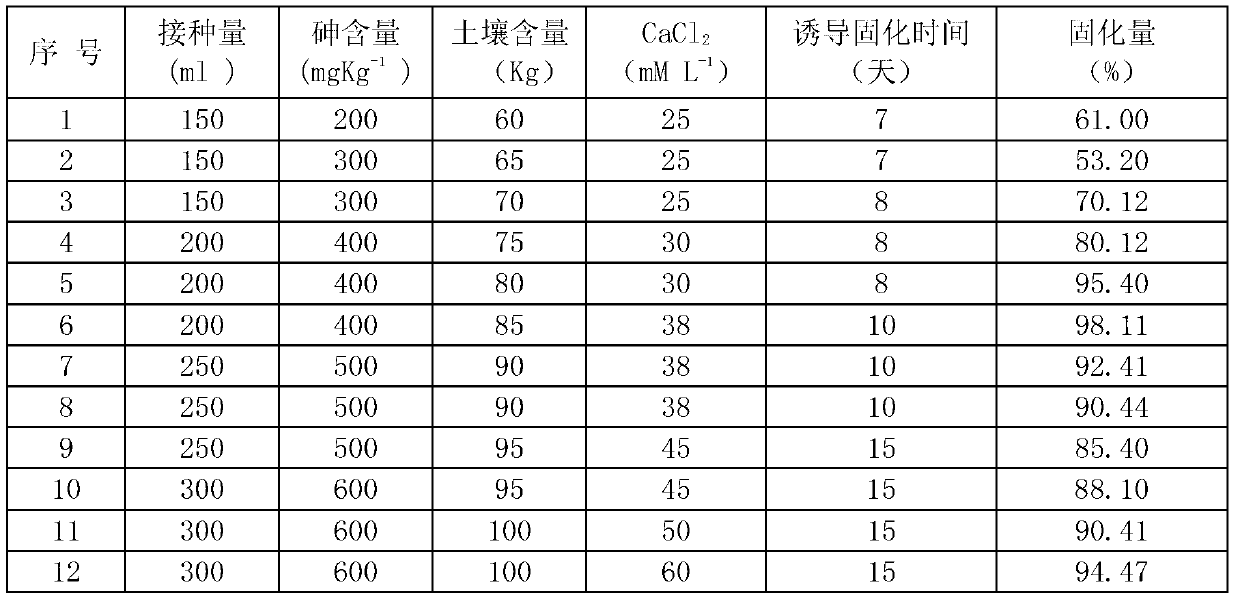Method for in-situ remediation of arsenic-polluted soil by arsenic-resistant bacteria with induction and solidification effects
An in-situ remediation and arsenic pollution technology, applied in the field of biological environmental pollution remediation, can solve the problems of difficult application of bioremediation technology, increase the difficulty of bioremediation, etc. Effect
- Summary
- Abstract
- Description
- Claims
- Application Information
AI Technical Summary
Problems solved by technology
Method used
Image
Examples
Embodiment
[0024]a. The soil in the area with serious arsenic pollution is selected as the arsenic-contaminated soil in a high-salt environment. The arsenic-polluted environment is that the heavy metals in the soil are in an exchangeable state and combined with carbonate, including arsenic-contaminated soil, cesium-contaminated soil, and copper-contaminated soil Soil, lead-contaminated soil, put in a sterilized bottle with a cover, put 1-2g of soil sample in a conical flask containing 50ml of nutrient broth, the pH of the nutrient broth is 8-8.5, and the arsenic content is 100mg L -1 , and then place the Erlenmeyer flask at a speed of 130rpmmin -1 , cultivated for 48 hours at a temperature of 30°C to obtain a bacterial solution;
[0025] b. Add the cultured bacterial solution to the arsenic content of 100mg L respectively -1 , 250mgL -1 , 500mg L -1 The nutrient broth medium is peptone 10g L -1 , beef extract 1.5g L -1 , yeast powder 1.5g L -1 and sodium chloride 5g L -1 Among the...
PUM
 Login to View More
Login to View More Abstract
Description
Claims
Application Information
 Login to View More
Login to View More - R&D
- Intellectual Property
- Life Sciences
- Materials
- Tech Scout
- Unparalleled Data Quality
- Higher Quality Content
- 60% Fewer Hallucinations
Browse by: Latest US Patents, China's latest patents, Technical Efficacy Thesaurus, Application Domain, Technology Topic, Popular Technical Reports.
© 2025 PatSnap. All rights reserved.Legal|Privacy policy|Modern Slavery Act Transparency Statement|Sitemap|About US| Contact US: help@patsnap.com

